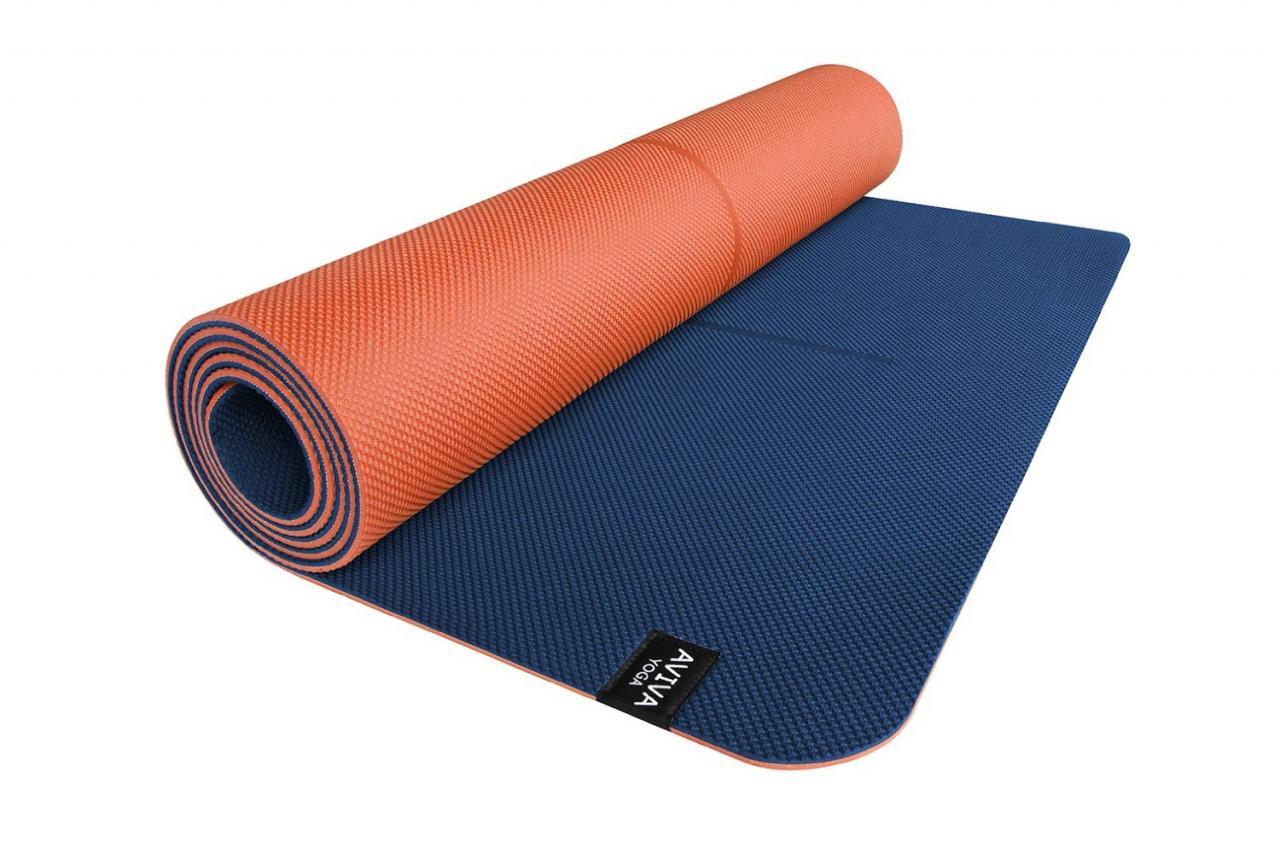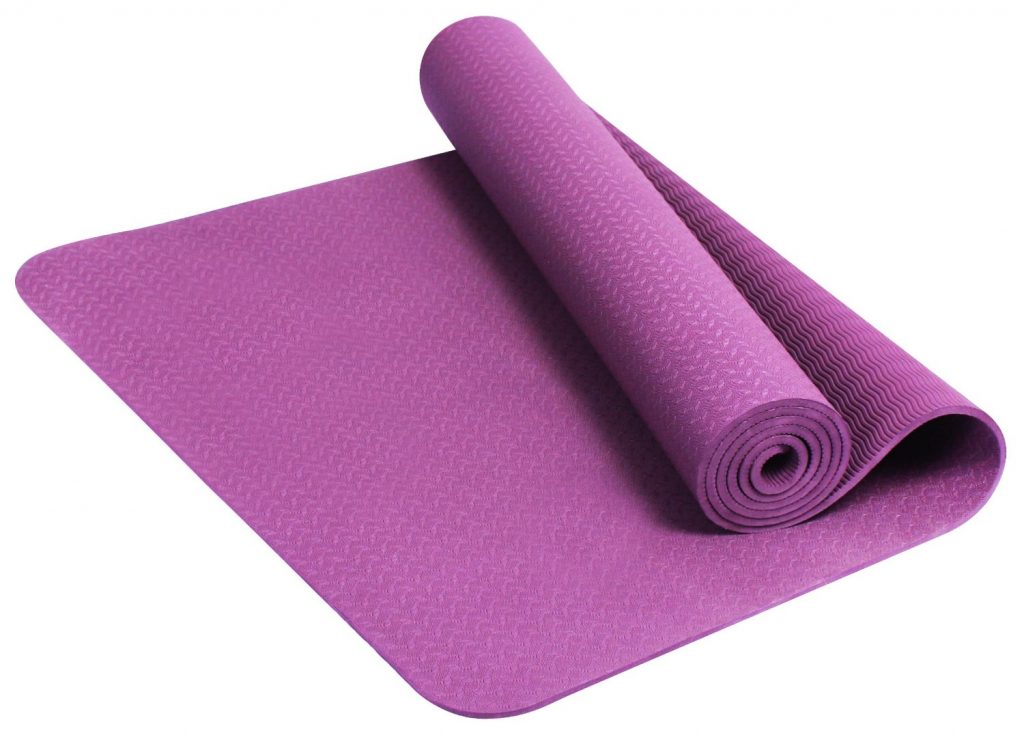Unroll Your Bliss: The Ultimate Guide to Choosing the Perfect Yoga Mat

Choosing the right yoga mat can feel like a daunting task, especially with the vast array of options available today. Whether you are a seasoned yogi or just starting your journey, having a quality mat is essential for a fulfilling practice. A good yoga mat not only provides a stable surface for poses but also enhances your comfort and confidence as you flow through your routines.
In this ultimate guide, we will explore what to look for in yoga mats, from material and thickness to grip and portability. With a little guidance, you can find the perfect mat that aligns with your needs and enhances your overall yoga experience. Let's unroll the path to your bliss, one mat at a time.
Types of Yoga Mats
When it comes to choosing the right yoga mat, understanding the different types available can significantly enhance your practice. Yoga mats come in various materials, thicknesses, and textures, each serving unique purposes. For beginners or those looking for comfort, thicker mats made from memory foam or natural rubber provide extra cushioning, making them ideal for restorative practices. For more advanced practitioners, thinner mats offer better contact with the floor, ensuring balance and stability during challenging poses.
Another important distinction among yoga mats is their material composition. PVC mats are widely used for their durability and affordability, but eco-conscious practitioners might prefer mats made from natural materials like jute, cotton, or biodegradable rubber. These mats not only reduce environmental impact but also often provide a superior grip. The choice of material can influence not just performance but also the overall comfort of your yoga experience.
Finally, texture plays a vital role in the functionality of yoga mats. Some mats offer a soft, smooth surface, which is great for gentle movements and yoga styles like yin or restorative. Others have a textured surface that provides extra grip, essential for dynamic practices such as vinyasa or power yoga. Selecting a mat with the right texture enhances traction and prevents slipping, allowing for a more focused and enjoyable practice.

Material Matters
Choosing the right yoga mat involves understanding the various materials that mats are made from. Common materials include PVC, TPE, natural rubber, and jute. PVC mats are known for their durability and affordability, making them a popular choice for beginners. However, they are less eco-friendly and can release toxic chemicals during production. On the other hand, TPE is a newer material that is lightweight, biodegradable, and free from harmful chemicals, making it a preferred choice for those concerned about the environment.
Natural rubber yoga mats offer excellent grip and cushioning, ideal for those who practice frequently or at high intensity. They provide a tactile surface that helps with stability during poses. However, these mats may not be suitable for those with latex allergies. Jute mats, often combined with rubber, are eco-friendly and provide a unique texture. They can be perfect for practitioners who want a sustainable option with a different aesthetic.
Ultimately, the choice of material plays a crucial role in your comfort and performance. It's essential to consider factors such as support, grip, and environmental impact when selecting the perfect yoga mat. Testing mats in person, if possible, can offer a better sense of which material resonates with your practice.
Thickness and Density
When selecting a yoga mat, thickness and density play a crucial role in your overall comfort and support during practice. Mats typically range from about one-eighth inch to one-half inch in thickness. Thicker mats tend to provide more cushioning for your joints, making them an excellent choice for restorative yoga practices or those with sensitive knees and wrists. However, a thicker mat can also feel less stable, especially in balance poses, so it's essential to find the right balance between comfort and stability.
The density of a yoga mat is another significant factor to consider. A denser mat generally offers more support and durability, which is beneficial for regular use. High-density mats are often made from materials like natural rubber or high-quality PVC, providing excellent grip and resilience over time. Conversely, lower-density mats may feel softer and more comfortable initially but can wear down faster and lose their supportive qualities as they age.
Ultimately, your choice of thickness and density should align with your practice style and personal preferences. If you participate in vigorous styles like vinyasa or ashtanga, a thinner, denser mat may enhance your stability and performance. For gentler practices or those prioritizing comfort, a thicker, cushioned mat might be the better fit. Experimenting with different options can help you discover the perfect yoga mat tailored to your needs.

Grip and Texture
When selecting the perfect yoga mat, grip and texture are crucial factors to consider. A mat that provides excellent grip will prevent you from sliding during poses, which is especially important in dynamic styles like Vinyasa or Ashtanga. Look for mats made from materials known for their non-slip properties, such as natural rubber or textured PVC. yoga mat, yoga, mat, yoga mats, rubber, mats, price, colors, bags, tpe, meditation, material, grip, comfort, towels, all, blankets, practice, body, traction, accessories, floor, exercises, support, thickness, options, pvc, materials, durability, items, content, straps, carriers, yoga classes, one, earth, fitness, choice, pilates, cotton, side, exercise, poses, workouts, cushioning, luggage, pick, types, travel, yogis, hands, beginner, water, everything, use, knees, feel, experience, some, hand, pro, account, 5mm, yoga practices, props, returns, store, bag, orders, filters, 6mm, adult, z-a price, sort, products, pose, information, dog, preferences, everyone helps maintain stability, letting you focus on your practice rather than worrying about slipping.
The texture of the mat also plays a significant role in your yoga experience. Mats can come in various textures, ranging from smooth to highly textured surfaces. A smoother mat may feel comfortable for balancing poses, while a more textured surface can offer extra traction for grip during challenging transitions. It's essential to find a texture that resonates with your personal style and enhances your comfort as you move through your practice.
Another consideration is how the grip and texture will hold up over time. Some mats may start to lose their grip after multiple uses, especially if they are not cleaned or maintained properly. yoga mat, yoga, mat, yoga mats, rubber, mats, price, colors, bags, tpe, meditation, material, grip, comfort, towels, all, blankets, practice, body, traction, accessories, floor, exercises, support, thickness, options, pvc, materials, durability, items, content, straps, carriers, yoga classes, one, earth, fitness, choice, pilates, cotton, side, exercise, poses, workouts, cushioning, luggage, pick, types, travel, yogis, hands, beginner, water, everything, use, knees, feel, experience, some, hand, pro, account, 5mm, yoga practices, props, returns, store, bag, orders, filters, 6mm, adult, z-a price, sort, products, pose, information, dog, preferences, everyone can extend the life of your mat’s grip, so consider the ease of cleaning and durability when making your choice. By prioritizing grip and texture, you can ensure that your yoga mat supports you in achieving a blissful practice.
Maintenance Tips
To keep your yoga mat in optimal condition, regular cleaning is essential. After each use, wipe down your mat with a damp cloth to remove sweat and dirt. For a deeper clean, mix a solution of mild soap and water, and use it with a soft sponge. Make sure to rinse your mat thoroughly and allow it to air dry completely before rolling it up. This will help prevent odors and bacteria from developing over time.

Another important aspect of maintaining your yoga mat is proper storage. Always store your mat in a cool, dry place away from direct sunlight, as UV rays can cause deterioration and fading. If possible, roll your mat rather than folding it, as folding can create creases that may eventually lead to wear and tear. A storage bag or a designated space can help protect your mat from dust and unwanted elements.
Lastly, be mindful of the material your yoga mat is made from. Different materials require different care. For instance, natural rubber mats may need more frequent cleaning, while PVC mats can be wiped down with disinfectant. Always check the manufacturer's recommendations for maintenance to ensure your mat lasts for many yoga sessions to come.
Eco-Friendly Options
When choosing a yoga mat, sustainability is becoming an increasingly important factor for many practitioners. Eco-friendly yoga mats are typically made from natural materials such as rubber, jute, or organic cotton, which are biodegradable and less harmful to the environment than synthetic materials like PVC. These mats not only minimize your carbon footprint but also offer excellent grip and durability, making them practical for regular use.
Many brands are now prioritizing eco-conscious production methods, ensuring that their mats are free from toxic chemicals and produced in ethical conditions. For example, natural rubber mats provide a non-slip surface and are crafted from the sap of rubber trees, which is a renewable resource. Additionally, jute mats combine natural fibers with an eco-friendly backing for a unique texture and feel, catering to those who want a more sustainable practice.
Investing in an eco-friendly yoga mat is not only a choice for personal wellness but also a commitment to the health of the planet. By opting for such mats, you support companies that focus on sustainable practices and contribute to a healthier environment. As awareness of environmental issues grows, more yogis are making the switch to eco-friendly options, enhancing their practice while promoting a better world.
